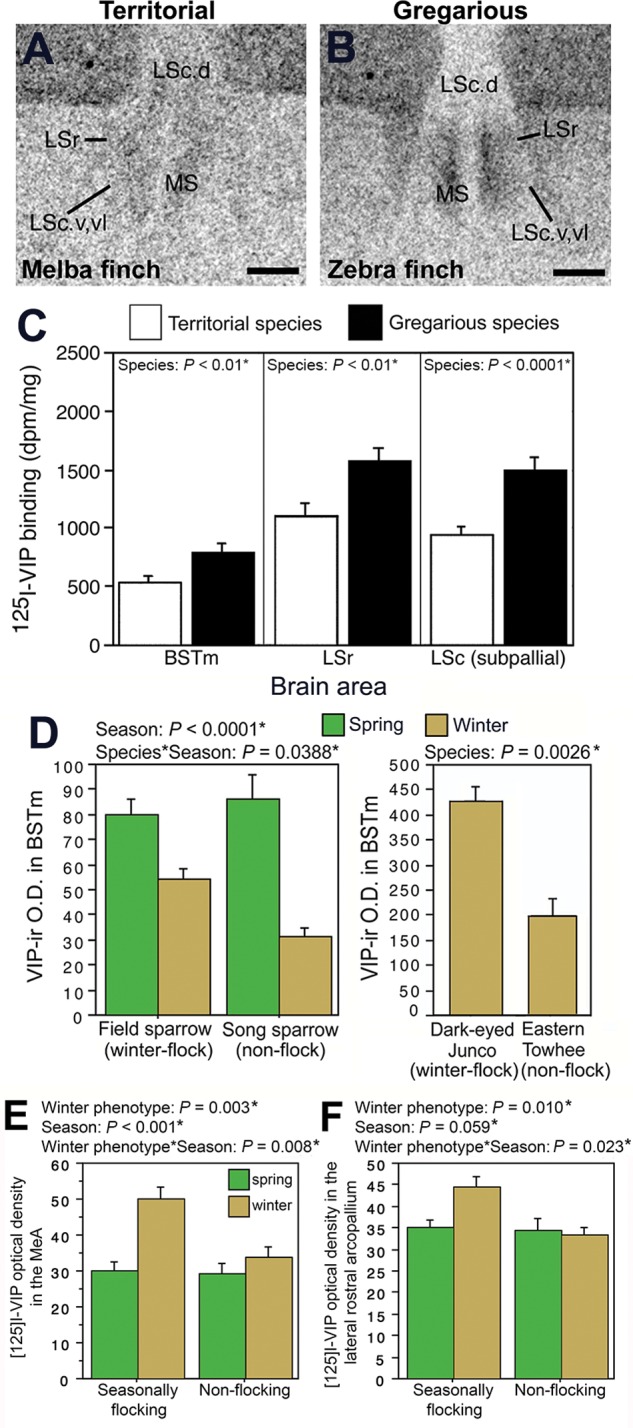Fig. 2.

VIP elements within specific brain sites are enhanced in flocking species relative to non-flocking species. A–B. Photomicrographs of 125I-VIP binding in the lateral septum of a territorial melba finch (A) and a gregarious zebra finch (B). Relative to territorial birds, gregarious birds have greater 125I-VIP binding in the rostral lateral septum (LSr) and subpallial caudal lateral septum (LSc.v and LSc.vl). Taken from Goodson et al. (2006). (C) Gregarious species have significantly greater 125I-VIP binding in the medial bed nucleus of the stria terminalis (BSTm), LSr, and LSc, as compared to territorial species (adapted from Table 1; Goodson et al. 2006). (D) VIP immunoreactive (-ir) fiber density in the BSTm is greater in winter flocking emberizid sparrows (field sparrows and dark-eyed juncos) compared to winter non-flocking sparrows (song sparrows and eastern towhees). Taken from Goodson et al. (2012b). E–F. Seasonally flocking sparrows show a winter increase in 125I-VIP binding density in the medial amygdala (MeA) (E) and lateral rostral arcopallium (F) as compared to the non-flocking sparrows. Taken from Wilson et al. (2016), courtesy of S. Karger AG, Basel.
